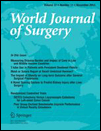Single Dual-Trained Surgeon for Breast Care Leads to Higher Reconstruction Rates After Mastectomy
Abstract
Background
Breast reconstruction improves the quality of life for mastectomy patients but is underutilized in the United States. This study investigated reconstruction rates for a dual-trained oncologic plastic surgeon to explore how provider-based factors influence reconstruction.
Methods
We evaluated consecutive mastectomy patients treated at the University of California, San Diego Medical Center between 2009 and 2012. We identified mastectomy patients based on Current Procedural Terminology codes and evaluated them for patient- and disease-specific variables. We evaluated reconstruction rates for the traditional team model of collaborating plastic and oncologic surgeons versus a single surgeon, dual trained in surgical breast oncology and plastic surgery. A multivariate regression analysis was then used to identify the significant predictors of reconstruction.
Results
Mastectomy was performed in 344 patients. The surgeon group was a significant predictor of postmastectomy reconstruction (p < 0.05). The traditional team of oncologic and plastic surgeons reconstructed 93 (63.3 %) of 147 mastectomy patients, whereas the single dual-trained surgeon reconstructed 140 (71.1 %) of 197 mastectomy patients. Race and insurance status did not influence the receipt of reconstruction in our single-surgeon model, however, patients of older age [odds ratio (OR) 0.93, confidence interval (CI) 0.89–0.98, p < 0.01], higher body mass index (OR 0.89, CI 0.82–0.97, p < 0.01), or more advanced disease (p < 0.01) were less likely to undergo reconstruction.
Conclusions
A single dual-trained surgeon for breast care influences reconstruction rates. A dual-trained surgeon increases the likelihood of reconstruction and obtains rates higher than previously reported. This may reflect the comprehensive care provided by a multidisciplinary-trained professional. A single surgeon providing care in oncology and reconstruction represents a comprehensive approach to breast care and demonstrates a relationship between provider practice and breast reconstruction.




